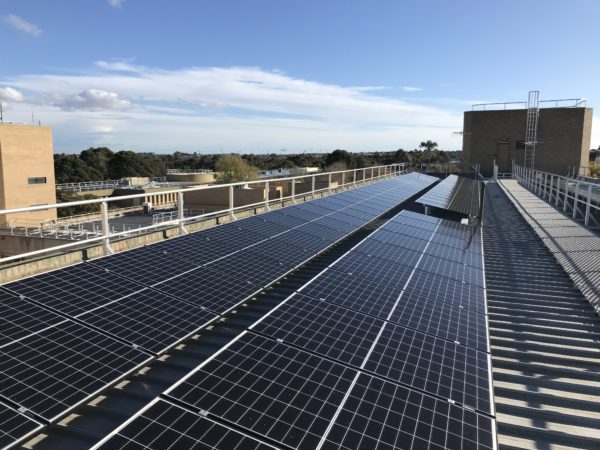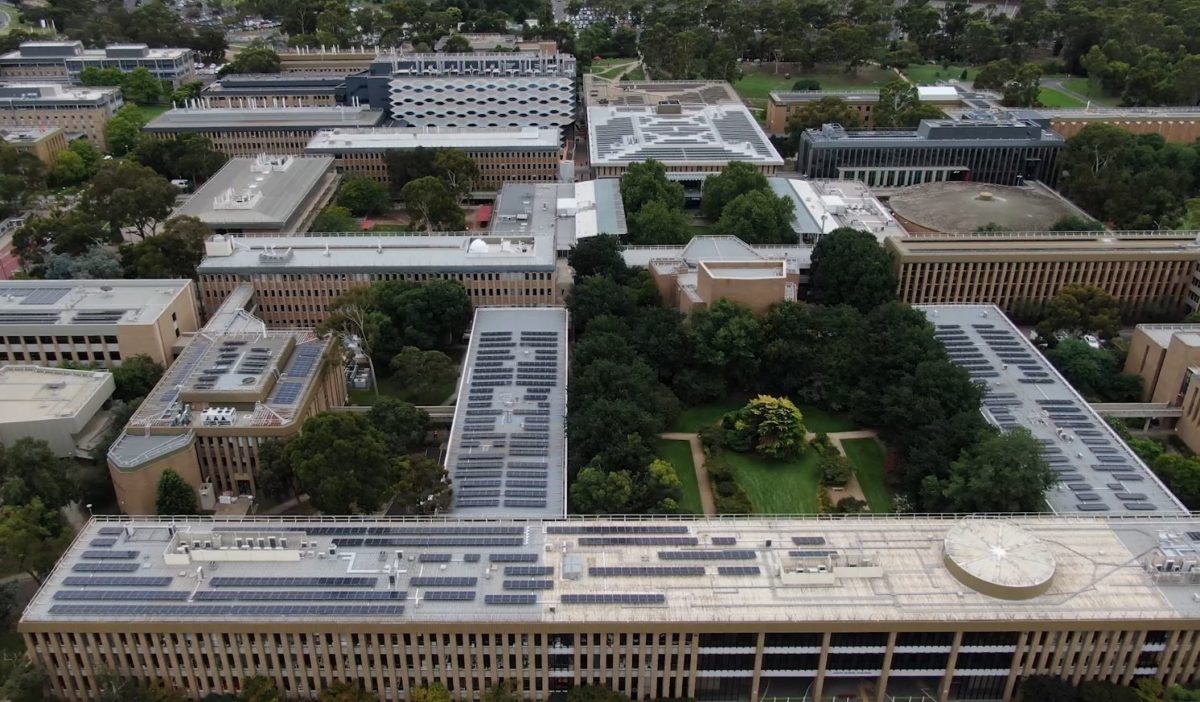In August 2019, La Trobe University (La Trobe) committed itself to a goal of ‘net zero’ emissions by 2029 through a $75 million initiative. Today, La Trobe has proved that its commitment was not, for lack of a better term, academic, after 7,500 solar panels became energised on almost 25 buildings at the University’s Bundoora campus in Melbourne’s north.
The installation, attributable to the handiwork of Solgen Energy Group, is a giant leap toward La Trobe’s ambitions emissions reduction target. The 2.5 MW system will, at its peak, provide up to 50% of the campus’ daytime power usage requirements.
Take the 1,164 panels installed on the storied rooftop above the shelves of the Borchardt Library, an install delivering 520 MWh annually and reducing La Trobe’s emissions by 570 tonnes alone. The Borchardt Library install comprises 15% of all solar panels installed on the Bundoora site and generates enough electricity to power both La Trobe’s Mildura and Shepparton campuses combined.

La Trobe Vice-Chancellor Professor John Dewar AO said that the completion of such a large amount of solar panels by Solgen proved that the University is serious about sustainability. “Having 7,500 solar panel system (sic) installed across 25 buildings will reduce our carbon emissions by 4,000 tonnes each year and is a major investment in our renewable energy future,” said Dewar.
Along with the installation of 24,000 energy-efficient LED lights and 3,300 solar panels installed at regional campuses, La Trobe expects to reduce its emissions by 15% in 2020 alone, and, as Dewar noted, “deliver financial savings through reducing our energy bills for the next 25 years.” In fact, by Dewar’s estimation, La Trobe will save approximately $615,000 a year thanks to its renewable uptake.
Lily D’Ambrosio, Victorian Minister for Energy, Environment, and Climate Change, congratulated La Trobe for its emissions reduction commitment, noting that: “It’s a clear demonstration of what is possible with leadership, clear targets, and renewable energy technology.” The remark, no doubt accompanied by a poorly veiled smirk as state governments and private investor frustration with the federal climate and renewable policy vacuum rages into another indistinguishable month, and another budget.
La Trobe is a state-wide university, making the consolidation of energy and emissions a difficult task. Indeed, considering its significant landholdings, the University is also investigating with industry and government whether it can viably install solar farms on its own land. Vice President Strategy and Development Natalie MacDonald said this initiative was the obvious next step in the University’s long-term sustainability plan.
Not only would such an installation provide clean energy for the University, but it would also allow for on-campus solar PV research. La Trobe is already taking advantage of in-house research and technology expertise to reduce emissions through its La Trobe Energy Analytics Platform (LEAP), which monitors and makes adjustments for the consumption of up to 50 smart buildings on campus.
This content is protected by copyright and may not be reused. If you want to cooperate with us and would like to reuse some of our content, please contact: editors@pv-magazine.com.









1 comment
By submitting this form you agree to pv magazine using your data for the purposes of publishing your comment.
Your personal data will only be disclosed or otherwise transmitted to third parties for the purposes of spam filtering or if this is necessary for technical maintenance of the website. Any other transfer to third parties will not take place unless this is justified on the basis of applicable data protection regulations or if pv magazine is legally obliged to do so.
You may revoke this consent at any time with effect for the future, in which case your personal data will be deleted immediately. Otherwise, your data will be deleted if pv magazine has processed your request or the purpose of data storage is fulfilled.
Further information on data privacy can be found in our Data Protection Policy.